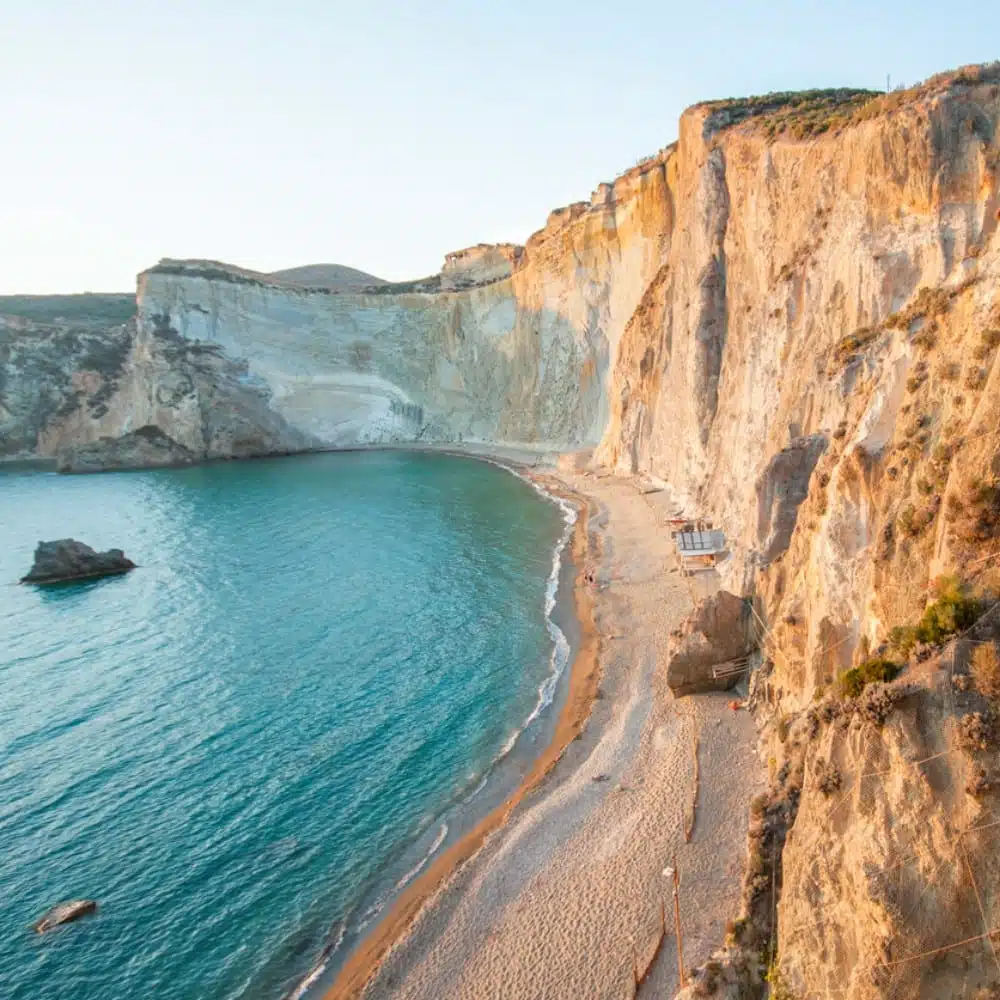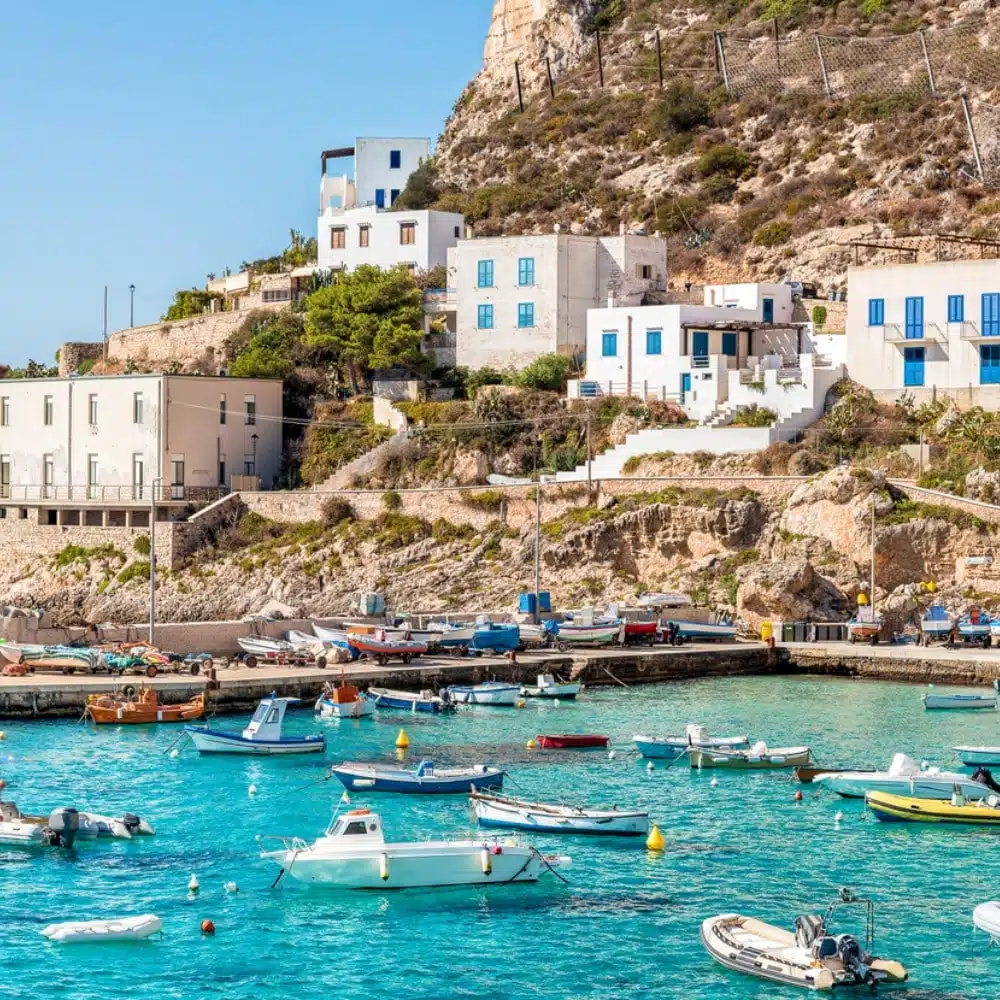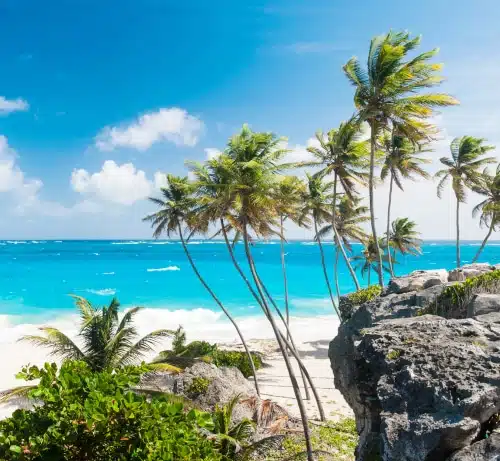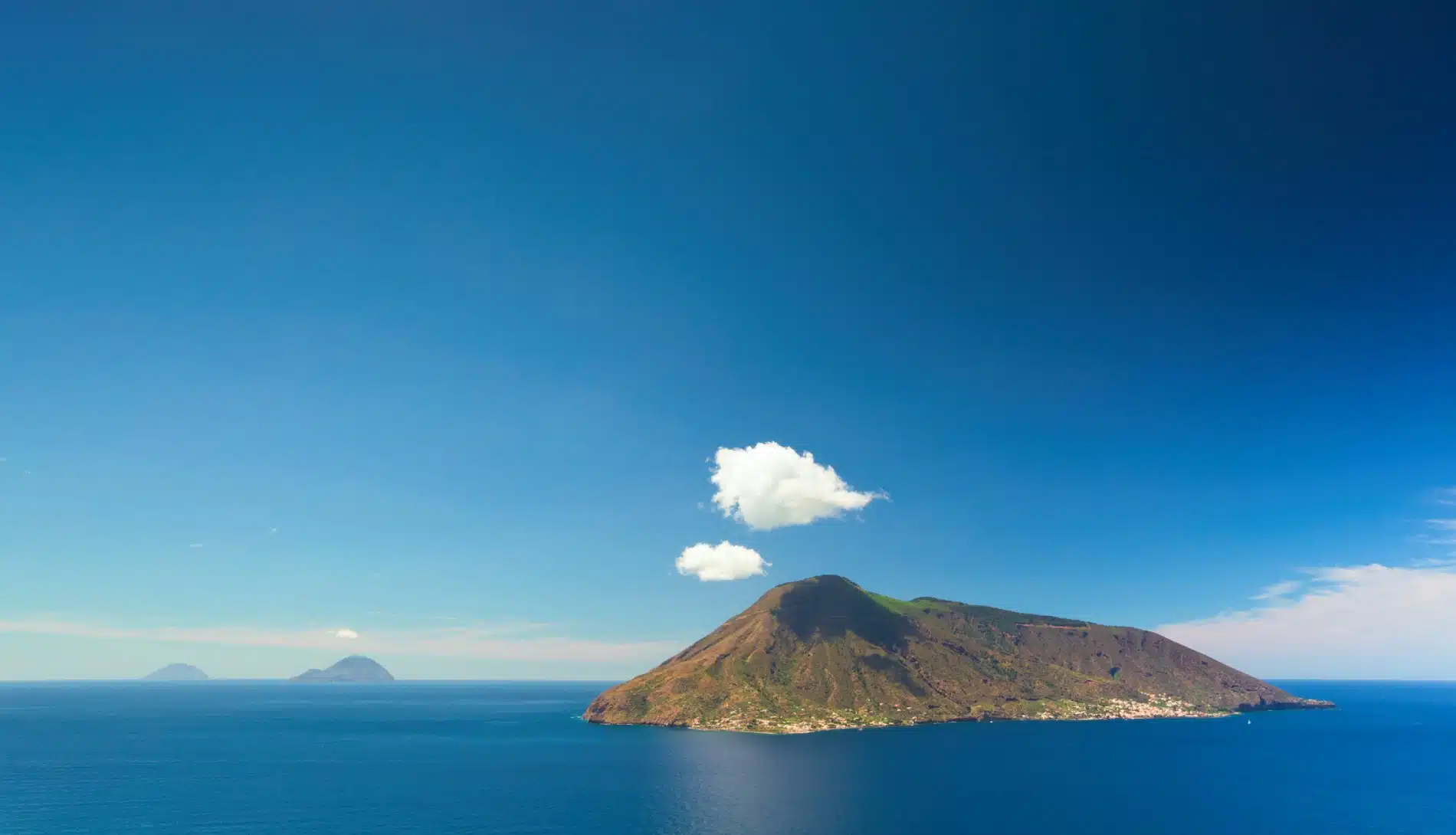Explore the unspoilt islands of Ponza, Procida and Filicudi
With Corsica and Sardinia to the west, the boot of Italy to the east and Sicily to the south, discover the hidden wonders of the Tyrrhenian Sea in the shadow of the islands of Elba, Capri, Ischia, Lipari and Stromboli. Offering everything from sandy and pebble beaches, caves and secret coves nestled in cliff faces, lush underwater landscapes and plantlife, extinct volcanoes and lively villages
Enchanting Ponza is a destination to die for
The story goes that Ponza’s wild beauty dazzled the Odyssey‘s hero Ulysses, charmed as he was by the enchanting sorceress Circe. Beyond the legend, this island in the Pontine archipelago has kept its aura of mystery and poetic charm, promising a unique travel experience. A few nautical miles off the coast between Rome and Naples, its towering ochre and white tuff cliffs, carved out with caves and wild creeks, stand above the crystal turquoise waters of the Mediterranean. You will want to stroll through the small port of Ponza with its trawlers, colourful houses, small shops and always-animated cafés that still have the sweet air of 1960s Italy – the Italy of Fellini and La Dolce Vita. The island is criss-crossed by numerous hiking trails offering breathtaking views of the sea and the other Pontine Islands. Among them is Palmarola, which is well worth a day’s visit. Jacques Cousteau described this almost uninhabited piece of land as “the most beautiful island in the Mediterranean”!

Picture-perfect Procida
Off the Amalfi coast, Procida – the smallest island in the Gulf of Naples not far from Capri and Ischia – has managed to stay in the background, away from the bustling southern Italian city. Its natural park, steep paths, wild creeks, crystal clear waters and lemon trees make it a truly unspoilt natural landscape! If you’re interested in swimming, there is the very Italian Spiaggia della Chiaia, but also the wilder Pozzo Vecchio, known as the Spiaggia del Postino. Once you have reached this horseshoe-shaped beach encircled by cliffs and caves in the island’s north-west, you will soon understand why it was immortalised in a famous film starring Philippe Noiret, which was played in cinemas in New York for two years.

Go back in time on a car-free island in the Aegadian islands
The Aegadian Islands are still little-known and lie to the west of Sicily, off Trapani and Marsala. The pleasure boats sailing off these three magnificent Mediterranean destinations seem to glide over the water and around the islands’ enchanting coves. Cars are banned from Levanzo, the smallest and least populated of the Aegadian islands. When you’re there, be sure to stroll from cove to cove to the beaches of Faraglione and Cala Minnola, or to the Grotta del Genovese, the walls of which are painted and engraved with palaeolithic art. And the clear waters of the island are full of surprises for anyone who loves diving.

Follow in the footsteps of a geologist on the Aeolian Islands
The western Aeolian archipelago, north of Sicily, is the place where dormant volcanoes crumble into the sea. Filicudi is a 9 km2 string of extinct volcanoes with a population of barely 300, which the Italians have long and jealously guarded as their own secret paradise. Boat trips are available to the enchanting coves and to the geological curiosities of the islet of Montenassari and La Canna, an impressive 71-metre-high rocky column left by an ancient eruption. To get a 360° view, go to the top of the Fossa Felci, Filicudi’s highest point, or to the Stimpagnato lookout.

Breach the medieval citadels of Giglio Island
You will undoubtedly have heard of Elba, the largest island in the Tuscan archipelago. But its little sister Giglio, opposite the promontory of Monte Argentario in the province of Grosseto, is probably less well known. You can’t help but be amazed by the vibrant colours of Giglio Porto village, with its two medieval towers. Another wide-walled medieval citadel, Giglio Castello, sits on the high ground. Climb further still and you will find the Poggio della Pagana, the island’s highest point. It’s worth going for a walk along this Tyrrhenian granite rock. Under the shade of oak trees, an old mule track leads you to a fine sandy beach ringed by cliffs, taking you through vineyards, pine forests and Mediterranean “maquis” scrubland along the way. This most bucolic setting encapsulates everything that makes Tuscany such a beautiful place.

Photos credits : © Istock




